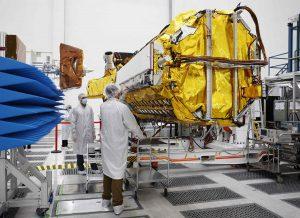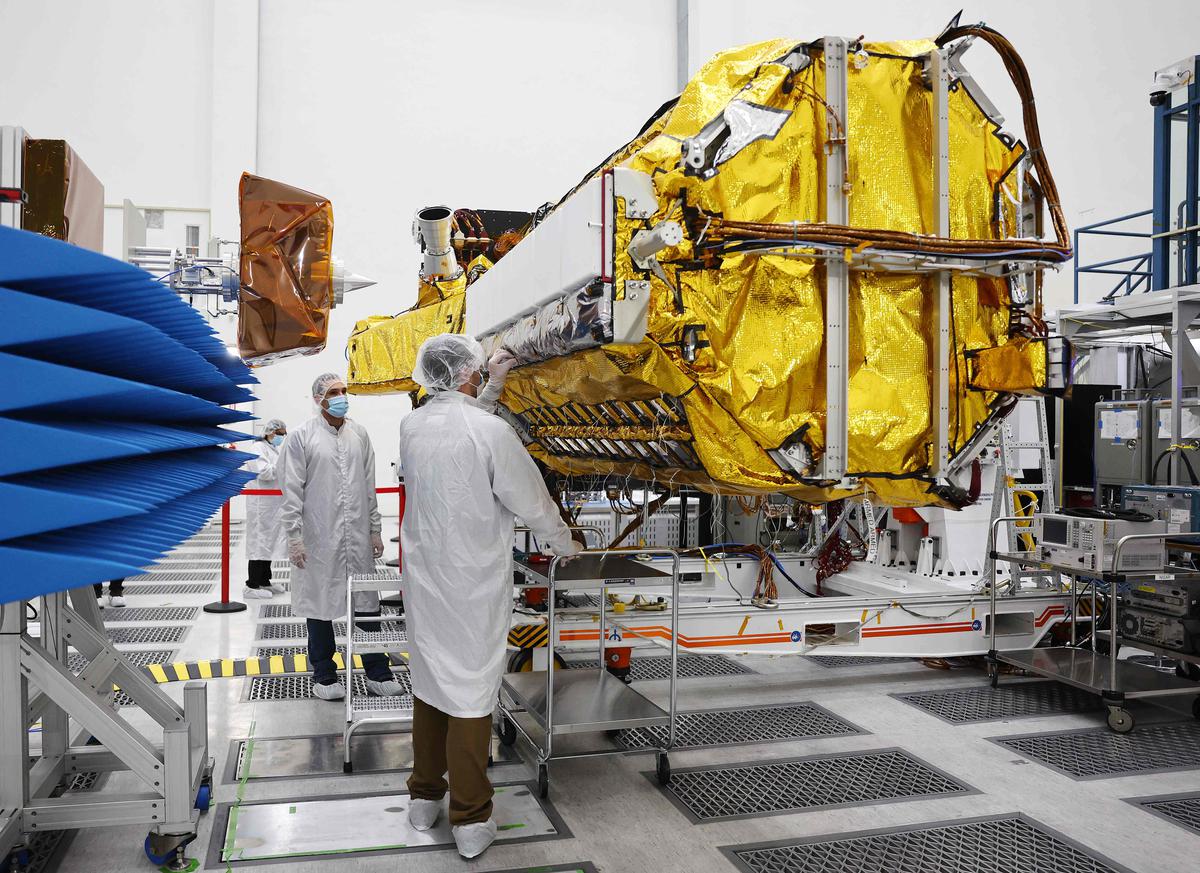
NISAR (NASA-ISRO Synthetic Aperture Radar)
National Aeronautics and Space Administration (NASA) and the Indian Space Research Organisation (ISRO), jointly developed an Earth-observation satellite, called NISAR (NASA-ISRO Synthetic Aperture Radar), got a send-off ceremony at the American space agency’s Jet Propulsion Laboratory (JPL) in Southern California. ISRO will use NISAR for a variety of purposes including agricultural mapping, and monitoring of glaciers in the Himalayas, landslide-prone areas and changes in the coastline.
The SUV-size satellite will be shipped to India in a special cargo container flight later this month for a possible launch from Satish Dhawan Space Centre in Andhra Pradesh. NISAR is expected to be launched in January 2024 from Satish Dhawan Space Centre into a near-polar orbit. The satellite will operate for a minimum of three years. NASA requires the L-band radar for its global science operations for at least three years. Meanwhile, ISRO will utilise the S-band radar for a minimum of five years.
What is NISAR?
NISAR has been built by space agencies of the US and India under a partnership agreement signed in 2014. The 2,800 kilograms satellite consists of both L-band and S-band synthetic aperture radar (SAR) instruments, which makes it a dual-frequency imaging radar satellite.
While NASA has provided the L-band radar, GPS, a high-capacity solid-state recorder to store data, and a payload data subsystem, ISRO has provided the S-band radar, the GSLV launch system and spacecraft.
NISAR will observe subtle changes in Earth’s surfaces, helping researchers better understand the causes and consequences of such phenomena. It will spot warning signs of natural disasters, such as volcanic eruptions, earthquakes and landslides. The satellite will also measure groundwater levels, track flow rates of glaciers and ice sheets, and monitor the planet’s forest and agricultural regions, which can improve our understanding of carbon exchange.
Important Takeaways for All Competitive Exams:
- ISRO Chairman: S. Somanath;
- ISRO’s foundation Date: 15th August, 1969;
- ISRO’s Founder: Dr. Vikram Sarabhai.



 Indian Olympic Medal Winners List Till N...
Indian Olympic Medal Winners List Till N...
 Who is the Inventor of the Gramophone?
Who is the Inventor of the Gramophone?
 HS Dhaliwal Appointed New DGP Of Andaman...
HS Dhaliwal Appointed New DGP Of Andaman...
